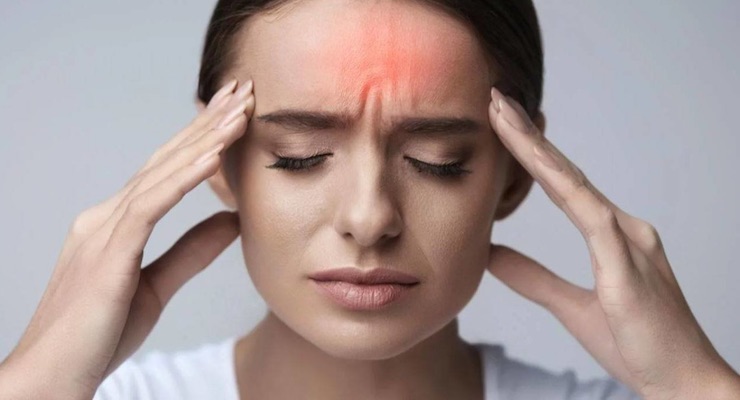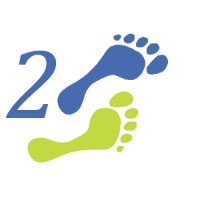Table of Contents
 Migraine is a neurological disorder characterized by repetitive chronic headaches. Migraine headaches affect more than 10% of the world population. For the duration and intensity of its attacks, migraine is distinguished from ordinary a headache. Although men are also victims, women are three times more affected than men do, and it is mainly young adults.
Migraine is a neurological disorder characterized by repetitive chronic headaches. Migraine headaches affect more than 10% of the world population. For the duration and intensity of its attacks, migraine is distinguished from ordinary a headache. Although men are also victims, women are three times more affected than men do, and it is mainly young adults.
Frequency of migraine attacks varies greatly from one individual to another. Some people have a few attacks per year, while others can have migraine headache up to four times a month. In some cases, attacks can occur several times a week, but rarely every day.
A migraine pain can last for days. The pain can be so severe that you are unable to concentrate and do your daily activities. In addition, certain migraine headaches may be accompanied by nausea, vomiting, irritability, light and sound sensitivity, and depression.
Migraine Causes and Risk Factors
The cause of migraine is unknown; scientists believe that the pain is probably caused by dilation of cerebral arteries. Many factors are suspected however:
Family history – it seems that there is a hereditary factor in the development of migraine; several cases of the disease are often found in the same family. In addition, it is found a gene located on the chromosome 19, which may lead to a hereditary form of migraine called familial hemiplegic migraine FHM), a type of migraine characterized by headache and weakness on one side of the body.
Sex – Women are more often victims of migraine. The disease affects almost three times more women than men. Although controversial, scientists think that this is predominantly due to hormonal changes because women suffer from migraine more often during menstruation.
Stress – Migraine is often found in people under stress; attacks can be triggered by stress related to problems from home or work.
Sleep pattern change – lack or excess of sleep is also responsible for the occurrence of migraine.
Certain foods – excessive consumption of chocolate, caffeine, beer, red wine, and aged cheeses; in addition, aspartame, monosodium glutamate, salted foods and processed foods have been reported as triggers of migraine headaches.
Other factors that can trigger migraine attacks include:
- Bright light
- Analgesic medications
- Excessive sexual intercourse
- Modification of atmospheric pressure
- Oral contraceptives or hormone replacement
- Noise or odor of perfume, cigarette smoke, etc…
Migraine Symptoms
Typically, migraine is characterized by violent headaches that last four to seventy-two hours. The pain is often worsens by light and noise. Migraine may be preceded by transient signs called auras. Before the attack, your may also experience visual or auditory disorder: flashes of light (photopsia), blind spots, blurred or cloudy vision, tunnel vision, etc.
Most often, the symptoms of migraine begins with a sudden pain on one side of the head located near an eye. In severe migraine headaches, you can feel pulsations in your cranium (skull) associated with excessive sleepiness, fatigue, irritability, nasal congestion, feeling cold or sweating, nausea and vomiting. The pain can be so intense that it will be difficult for you to continue your professional and domestical activities; you have to isolate yourself in a quiet place away from light and loud sound.
Migraine attacks vary from one individual to another. You may have several attacks per year, while another person complains of migraine headache three or four times a month, or even several times a week.
In general, before or during migraine headaches, you may experience the following (with/without auras) symptoms:
- Anxiety or fear
- Weakness, unsteadiness
- Difficulty to speak
- Excessive saliva in your mouth
- Numbness or tingling on one side of your face or body
- Unreasonable need to eat or go to the bathroom
- Unable to understand or comprehend spoken words
- Out-of-the-body experience – you feel separated from your own body
- Auditory changes: buzzing, auditory hallucinations (hearing voices or sounds that do not exist)
- Visual disorder: bright lights, zigzag lines, scintillating scotoma, tunnel vision, retinal migraine (a temporary monocular blindness), etc.
Diagnosis
Most often, migraine requires no further specific medical exams; your doctor can identify the disease based on your medical history or by doing physical exam. During the physical exam, your doctor will look for typical signs and symptoms of migraine to confirm the disease.
If the migraine is characterized by sudden and severe headache, you may be recommended to do a scanning, nuclear magnetic resonance imaging (NMRI) and lumbar puncture to confirm the diagnosis. In addition, imaging techniques and other medical exams can be performed if:
- The first migraine headache occurs before age 10 or after 40 years
- Migraine affects the same half of the skull;
- Recent and major change in the symptoms
- Symptoms of the aura last more than one hour,
- The headaches are accompanied by diplopia (double vision), mental disorder, auditory hallucinations (hearing voices or noises that do not exist), and Gustatory hallucination (sensation of taste in the absence of a gustatory stimulus)
Computerized tomography (CT) – this imaging exam help your physician detects or rule out tumors, cerebral arteriovenous malformation (abnormal collection of blood vessels within the brain, which can cause severe migraine headaches), transient ischemic attack, or stroke.
Magnetic Resonance Imaging (MRI) – this exam allows your health care provider to visualize the internal structure and function of your brain and eventually discover signs of tumors, strokes, aneurysms, neurological problems and other brain abnormalities.
Lumbar puncture – during this medical procedure, a health care specialist collect cerebrospinal fluid (CSF) by inserting a needles between the two vertebrae in your lower back. Lumbar puncture is indicated when there are signs of meningitis or other inflammatory cerebral problems.
Migraine Treatment (Medical)

The treatment of migraine headaches must be undertaken as soon as possible to obtain better results. Against minor symptoms, you can be recommended to take nonsteroidal anti-inflammatory drugs and analgesics to eliminate the pain. If they do not produce satisfying result, you may be prescribed derivatives of ergot such as ergotamine and triptans.
Non-steroidal anti-inflammatory drug (NSAIDs) – This class of drugs includes aspirin, ibuprofen and many others. NSAIDs are used to relieve symptoms of mild to moderate migraine headaches; they reduce pain, fever and inflammation.
However, prolonged used of NSAIDS can lead to:
- Nausea
- Vomiting
- Headache
- Diarrhea
- Constipation
- Decreased appetite
- Skin rash
- Dizziness
- Fluid retention
- Although rare, those drugs can cause kidney failure, liver failure, and ulcers.
Ergot – Ergotamine (Migergot, Cafergot) is used to treat migraine, and sometimes to fight against Parkinson’s disease. It reduces migraine headaches by temporary narrowing blood vessels in the brain. You should not use this medication if you are a pregnant women, or if you have heart disease, chronic hypertension, or blood vessel problems. Side effects may include:
- Cramping
- Nausea
- Vomiting
- Chest pain
- Tingling or burning sensations
- Feeling of cold.
Triptans – Triptans mimic the action of serotonin and cause constriction of blood vessels. They are avaialble in the form of nasal spray, tablets and intravenous for serious cases of migraine. They are used to treat pain, nausea and light and sound sensitivity related to migraine. The most common of this class of drug include eletriptan (Relpax), almotriptan (Axert), sumatriptan (Imitrex), rizatriptan (Maxalt), naratriptan (Amerge), zolmitriptan (Zomig), and frovatriptan (Frova).
However, triptans offen cause side effects, which may include:
- Nausea
- Drowsiness
- Dry mouth
- Dizziness
- Facial skin redness
- Sore throat
- Warm and /or cold sensations
- Abnormal problems: tingling, burning, Pricking, etc..
- Feelings of heaviness in chest
- Tightness or pressure in the throat or neck.
In addition, depending on the symptoms of the migraine, your doctor may prescribe you anti-seizure drugs, anti-depressants, antihistamines and botulinum toxin type A (Botox).
Migraine Treatment (Alternative)
You can also use natural alternatives to a get a break from migraine symptoms.
Chamomile (Matricaria recutita, Chamaemelum nobile) – taking chamomile is considered one of the most effective remedies against migraine headaches. However, in some people, it may take up to six to eight weeks before you feel the healing effects.
5-http – 5-HTP is an amino acid that our body uses to manufacture serotonin, a neurotransmitter that helps brain cells communicate with one another. Several studies have demonstrated that 5-HTP can help reduce the frequency and intensity of migraine headaches.
Relaxation techniques – certain relaxation techniques such as biofeedback (a non-medical technique allowing you to measure and control your body functions such as such as heart rate, blood pressure, muscle tension and skin temperature) and autogenic training (therapeutic relaxation used to get relief from stress, clinical depression and anxiety) may be effective in preventing and combating migraines. In addition to headaches, these techniques are also useful in cases of urinary incontinence, hypertension, fibromyalgia, asthma, and cancer.



